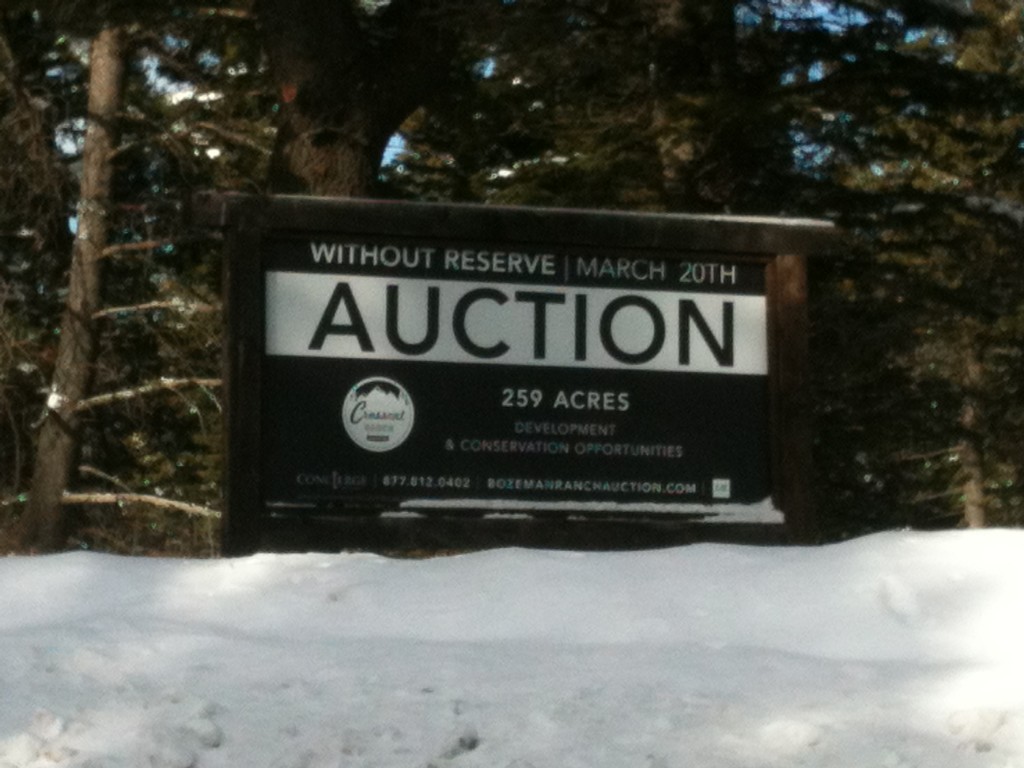As you may recall, the membership at the May General Meeting voted overwhelmingly to appeal the commission’s grant of a variance to enable conversion of old barns to guesthouse/recreational use, within the setback from Bridger Creek. As is too often the case, this was an episode of build-first-permit-later, and we were puzzled to see the commission seemingly content to see its authority flouted. There’s more background here:
http://bcpoa.net/2013/04/variance-hearing/
BCPOA has appealed the commission’s decision, granting a variance that allows the project to proceed. While this is a very messy, multilayered case, the points we would like to make are simple. For example,
- The commission should not lightly set aside objective standards, merely because it likes a project, for then standards have no meaning.
- Saving pennies through poor documentation and circumvention of procedures is enormously costly in the long run, as citizens are denied due process and confusion propagates errors.
The first issue we are contesting is that the commission did not issue a proper written decision; it merely delivered the verdict, making reference to the audio recording of the proceedings. That makes it difficult to distinguish actual findings from mere discussion, and imposes additional burdens on anyone who desires to review or contest a decision. This is a constitutional issue, and if we prevail on this point, we may recover our costs. However, in that case, a likely outcome is that the judge would remand the case to the commission for a fresh statement of the decision, essentially restarting the process.
Getting to the meat of the case, it’s still complicated. There are actually two standards for a variance, one via the P&Z commission, and one via the county commission. Rather than considering them sequentially, as is proper, both were heard together. We don’t believe that either standard was met, but this further mingles procedural and substantive issues.
The variance case was actually heard twice. Initially, the commission denied it. Then, circumventing regulations that prevent rehearing an application within one year, the commission reconsidered the variance a month later, under the pretense that it had been “withdrawn” and re-presented with new information.
As if that weren’t enough, the commission only considered the question of a variance after it had already granted a Conditional Use Permit for the project. This is backwards, because the CUP is moot without the variance, and the discussion of standards among the two proceedings was somewhat mingled and confused.
As the case now stands, BCPOA has filed its initial complaint, and the parties have responded. We have moved for summary judgment on the constitutional issue of adequacy of the written decision.
We have met with the other parties to agree on what documents constitute the official record. The county has fought tooth and nail to exclude a few documents, including its own variance evaluation criteria and public sewer permit records. We are somewhat puzzled by this, as they are part of the evidence of a pattern of errors and omissions, but not decisive in themselves. This wrangling increases our costs, deterring future appeals. (By contrast, BCPOA cheerfully granted the applicant’s request to intervene, though it is not in our favor and we could have contested it, because we felt that it was right to do so and minimized cost and delay to all concerned.)
Next, we must file a brief on the substance of the case, though we are hoping to defer that until the constitutional question has been heard.
For the moment, BCPOA is adequately financed, in part due to the very generous rate reduction that our attorney, Brian Gallik, has granted us. Our legal committee, Deb Stratford, Richard Lyon, Charlie Hager & Chuck Broughton, has also put in many volunteer hours. There may yet come a time when we need to appeal for funding, but for the moment we hope we can use our resources for other purposes. In any event, thank you for your support, past and future.
FINAL BCPOA COMPLAINT
GC variance evaluation criteria
[google-map-v3 width=”350″ height=”350″ zoom=”12″ maptype=”hybrid” mapalign=”center” directionhint=”false” language=”default” poweredby=”false” maptypecontrol=”true” pancontrol=”true” zoomcontrol=”true” scalecontrol=”true” streetviewcontrol=”true” scrollwheelcontrol=”false” draggable=”true” tiltfourtyfive=”false” addmarkermashupbubble=”false” addmarkermashupbubble=”false” addmarkerlist=”10600 Bridger Canyon Rd, Bozeman MT 59715{}1-default.png{}Petty CUP & Variances” bubbleautopan=”true” showbike=”false” showtraffic=”false” showpanoramio=”false”]





 Twitter
Twitter Facebook
Facebook RSS
RSS Email
Email